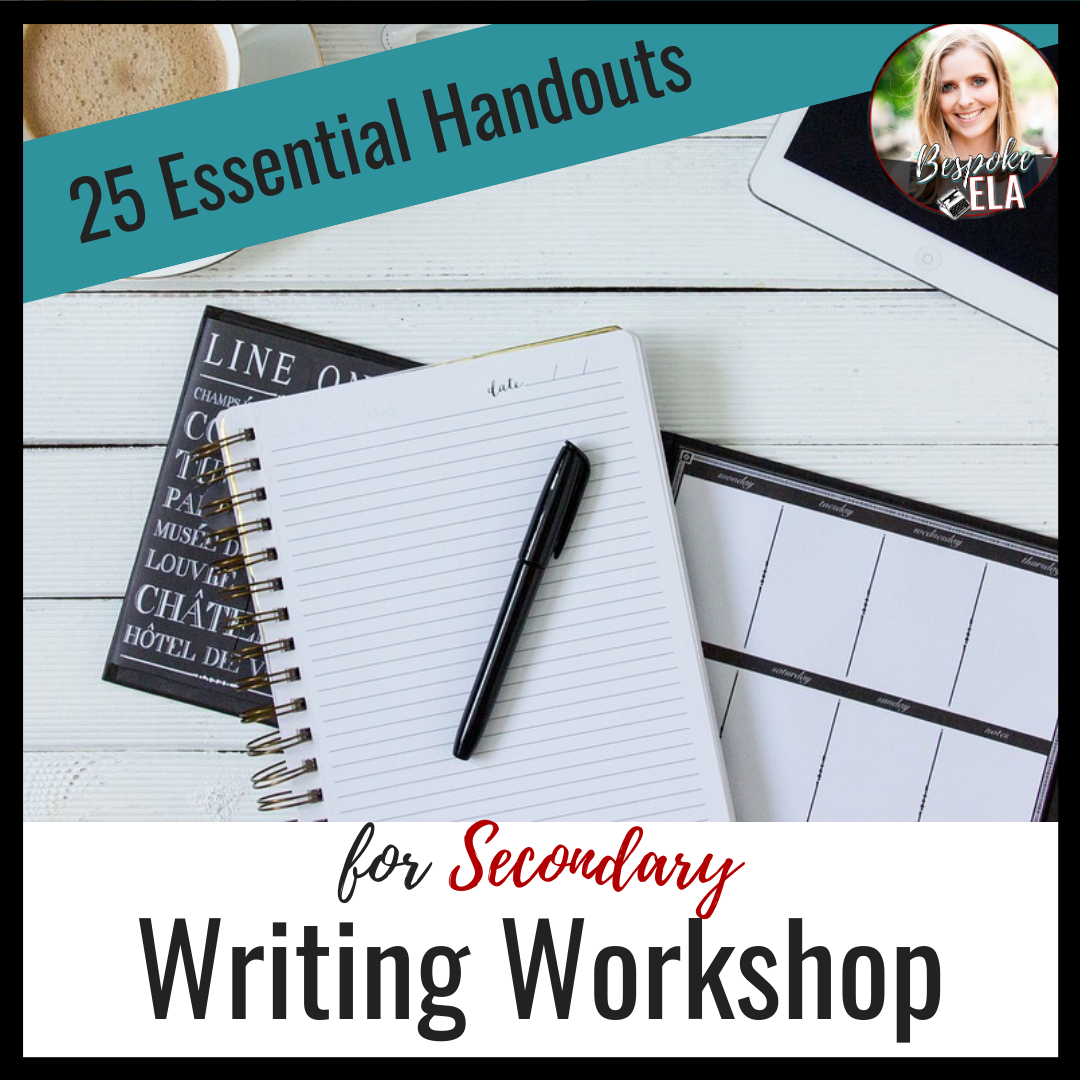A writer’s toolkit is a resource for students to use as a reference guide during writing workshop. A writer’s toolkit can take the form of a digital folder or even physical folder. Both options can work for students depending upon the needs of your students— or your individual preference.
Here are the basic steps for building a writer’s toolkit for students to use during writing workshop throughout the school year.
Step One: Use Backward Design
The first step in helping students develop a writer’s toolkit is to use backward design and start with the end in mind. This means to look at the final writing product of the semester or the year and then work backwards to determine the targeted writing skills that students will need to work on to build up to the final writing product.
Once you have determined the final writing product, make a list of scaffolded skills and organize them in a logical order that builds throughout the semester or marking period.
Here is a suggested sequence of writing skills for an argumentative essay:
Thesis Statement
Introduction paragraph
Paragraph Organization
Topic Sentences
Selecting textual evidence
Blending textual evidence
Crafting commentary and analysis
Concluding paragraph
Academic language & vocabulary
Editing and revision
This is just a suggested sample list of skills, but you can craft your list of skills according to your students’ needs.
Step Two: Create Informational Handouts for Each skill
After creating a list of scaffolded and targeted writing skills for your writing unit, you can create handouts that can be used during writing workshop. Students can keep these handouts as reference guides throughout the writing process. These handouts form the crux of the writer’s toolkit for students. I like to have have my students keep their writing workshop handouts in a folder that they keep in the classroom. I also provide a wall of reference folders where I keep extra copies of skills-based handouts for students to take as needed.
I find that having students keep a writer’s toolkit helps them to be more independent learners and writers. It also reinforces learning and writing mini-lessons.
Check out this pack of 25 Essential Handouts for Writing Workshop from Bespoke ELA if you’d like to have print-ready resources to use in your classroom.
Step Three: Allow Students to Create Their Own Tools
As a final step in this process— or alongside giving out handouts and tools for a writer’s toolkit, students can likewise create their own handouts and tools to use. One of the things I like to have my students do is create doodle notes pages for targeted writing skills. When students can sort, categorize, and process information on their own and in their own way, it can help them to understand it in their own way.
Here are some other options that students can use to create their own tools for a writer’s toolkit:
Infographics (see Canva.com)
Google slideshow
Comic strip
Do’s and Don’ts list
Lists of examples and rules
There are many more ideas where these come from, but hopefully, this list gets you started off on the right foot for helping students create their own writer’s toolkits.
What else would you add to this list? Please leave us a comment. We’d love to hear from you!
Related Resource
About the Author
Meredith is the founder and creator of TeachWriting.org and Bespoke ELA. She has taught high school English for 10+ years in Dallas, Chicago, and New York City and holds a M.A. in Literature from Northwestern University. She has always had a connection to the written word-- through songwriting, screenplay writing, and essay writing-- and she enjoys the process of teaching students how to express their ideas. Meredith enjoys life with her sweet daughter and Yorkie.







